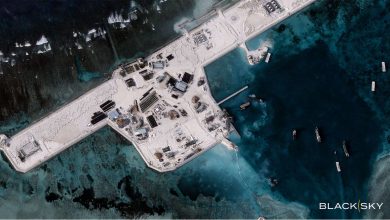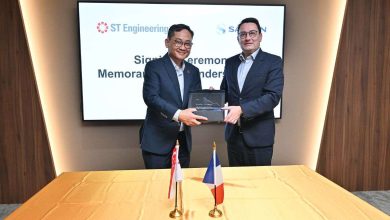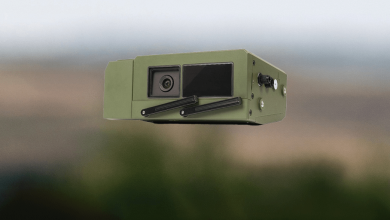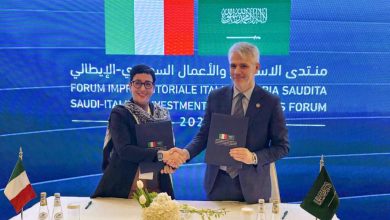
Thales Alenia Space Partners with ESA for Groundbreaking Copernicus Rose-L Satellite Project
Thales Alenia Space, a collaborative venture comprised of Thales (67 %) and Leonardo (33 %), revealed today that it has inked a 482 million euro agreement with the European Space Agency (ESA) to develop the Copernicus Radar Observation System for Europe in L-band (ROSE-L) environmental surveillance satellite, as part of Europe’s Copernicus initiative, with the initial tranche set at 90 million euros.
Copernicus is a global Earth observation initiative spearheaded by the European Commission, with the European Space Agency (ESA) overseeing and managing the Space component. It encompasses the Sentinel satellite series and offers Earth observation data aimed at environmental protection, climate monitoring, natural disaster evaluation, and other societal objectives.
As the primary contractor for this initiative, Thales Alenia Space will collaborate closely with Airbus Defence and Space, the principal partner responsible for the radar instrument. This mission addresses the requirements articulated by both the Land Monitoring and Emergency Management services. Its intended applications include soil moisture evaluation, land cover mapping, crop type identification, forest type/cover assessment (supporting biomass estimation), food security, precision agriculture, maritime surveillance, and identifying natural and human-induced hazards.
Furthermore, the mission will aid in the operational oversight of the cryosphere and polar regions, which includes sea ice mapping and monitoring land ice. Additional emerging applications will be facilitated through synergistic and complementary observations with C-band and X-band SAR systems.
ROSE-L is a three-axis stabilized satellite built on the state-of-the-art Thales Alenia Space Multi-Mission Platform (MILA) product line and will house the L-Band Synthetic Aperture Radar (SAR) Instrument dedicated to continuous monitoring of land, ice, and oceans. It provides enhanced revisit times, full polarimetry, excellent spatial resolution, high sensitivity, low ambiguity ratios, and is equipped for both repeat-pass and single-pass cross-track interferometry. It utilizes a 5-panel deployable structure measuring 11 m x 3.6 m, featuring a highly innovative and lightweight planar Phased Array Antenna (PAA). The satellite will also incorporate a trio of Monitoring Cameras (CAM) to observe the deployment of the SAR antenna and solar arrays.
“With this agreement, Thales Alenia Space solidifies its role as a pivotal entity in Earth Observation and Environmental missions. For services like the Copernicus Emergency Management Service (EMS), in particular, ROSE-L data will significantly reduce the time from the occurrence of a natural or man-made disaster to the first post-event image, which is crucial for public safety,” stated Hervé Derrey, CEO of Thales Alenia Space.
Massimo Comparini, Senior Executive Vice President of Observation, Exploration, and Navigation at Thales Alenia Space, remarked: “Thales Alenia Space will leverage its proven experience in Radar Earth observation initiatives to fulfill this new mission. ROSE-L will augment European radar imaging capacity beyond that offered by Sentinel-1, thus creating an opportunity to improve coverage both at European and global levels while shortening intervals between successive radar images.”
The MILA platform will also comply with space debris mitigation standards, utilizing demisable technologies for sustainable space and mechanical interfaces that align with potential future On-Orbit Servicing capabilities.
ROSE-L will be compatible with both Vega-C and Ariane 6-2 launch vehicles, weighing 2,060 kg at liftoff and operating at an altitude of 700 km.
Given that the longer L-band signal can penetrate numerous natural materials such as vegetation, dry snow, and ice, the mission will yield additional data that cannot be captured by the Copernicus Sentinel-1 C-band radar initiative. It will support forest management, subsidence monitoring, soil moisture assessment, and crop type differentiation for precision agriculture and food security. Additionally, the mission will assist in monitoring polar ice sheets, ice caps, sea-ice extent in polar regions, and transient seasonal snow.
Thales Alenia Space in Belgium will supply the Power Control and Distribution Unit (PCDU) and the Solar Array Photovoltaic Assembly (PVA), while Thales Alenia Space in Switzerland will provide the monitoring camera, and Thales Alenia Space in Spain will deliver the Ka-band Transmission Assembly, the Remote Interface Unit (RIU), and the S-band Transponder. Leonardo is entrusted with supplying the Star Trackers.
With over 40 years of expertise and a distinctive blend of skills, knowledge, and cultures, Thales Alenia Space delivers cost-efficient solutions in telecommunications, navigation, Earth observation, environmental management, exploration, science, and orbital infrastructure. A partnership between Thales (67%) and Leonardo (33%), Thales Alenia Space also collaborates with Telespazio to form the parent companies’ Space Alliance, offering a comprehensive range of services. Thales Alenia Space reported consolidated revenues of approximately 2.15 billion euros in 2019 and employs around 7,700 individuals across nine nations.







